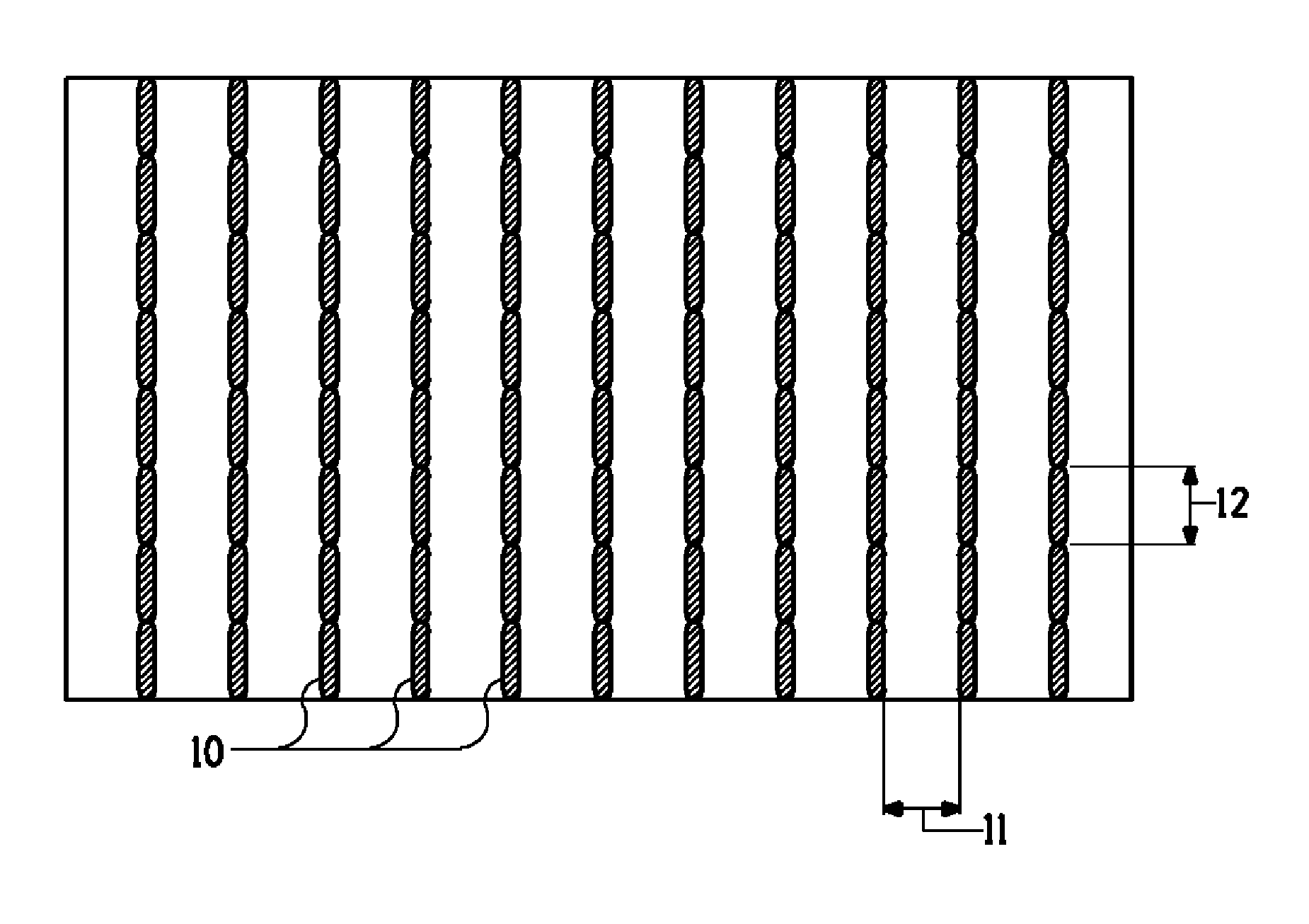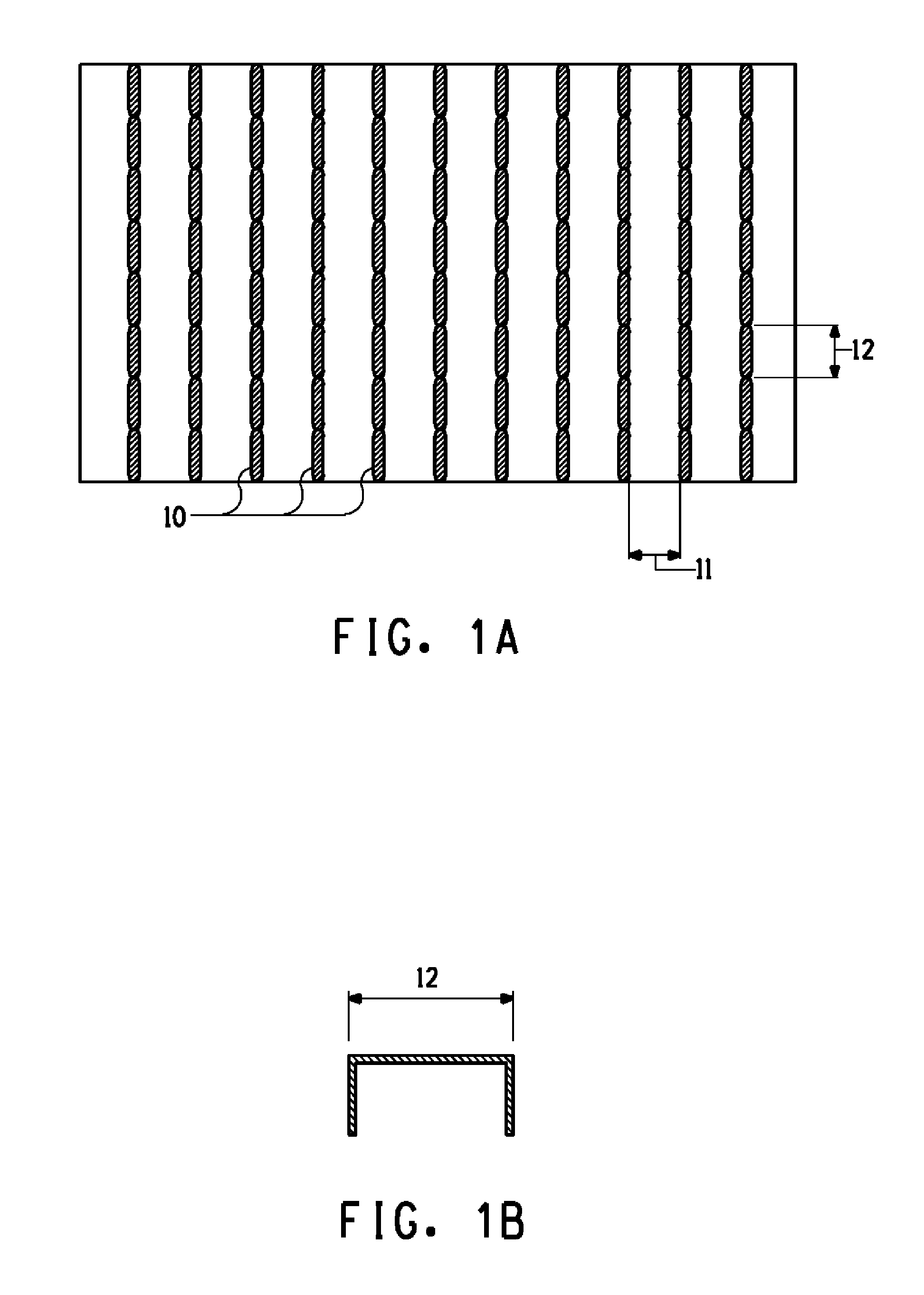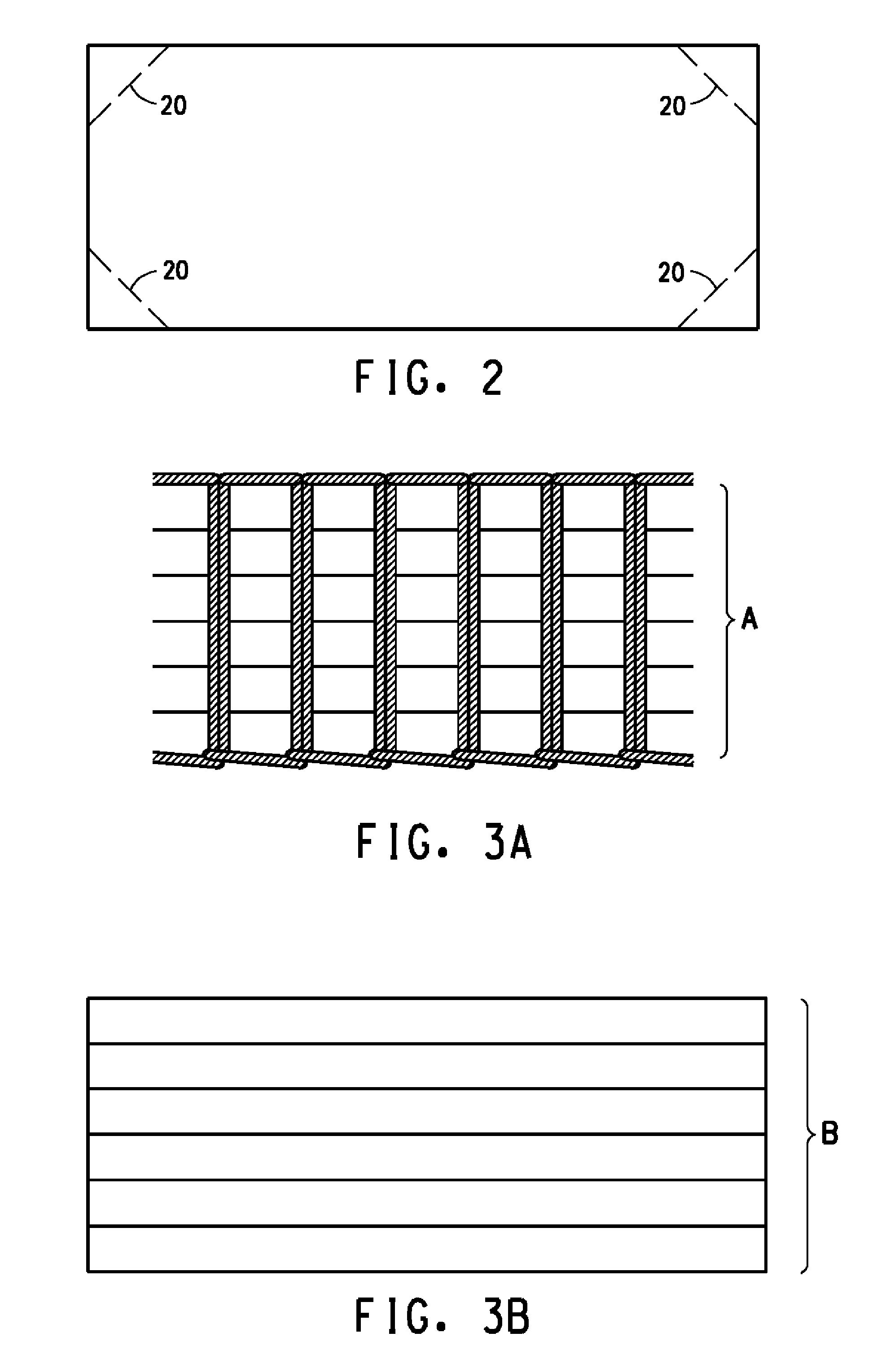Fabric assembly suitable for resisting ballistic objects and method of manufacture
- Summary
- Abstract
- Description
- Claims
- Application Information
AI Technical Summary
Benefits of technology
Problems solved by technology
Method used
Image
Examples
examples
[0088]The example constructions described herein are comprised of sub-assemblies of first (connected) sections and / or second (unconnected) sections of anti-ballistic fabric plies. Descriptions of all the anti-ballistic fabrics used to generate the examples are provided in Table 1. A description of the consolidated sub-assemblies is provided in Table 2
[0089]Examples prepared according to the process or processes of the current invention are indicated by numerical values. Control or Comparative examples are indicated by letters. Data and test results relating to the Comparative and Inventive Examples are shown in Table 3
Description of Fabric Layers
[0090]Layers of the following high tenacity fiber fabrics used to fabricate sub-assemblies with connectors or incorporated as unconnected ply sub-assemblies in the construction of the inventive and comparative examples are provided below and in Table 1.
[0091]Fabric layer “F3” was a plain weave woven fabric of 600 denier (667 dtex) poly(p-phe...
example 13
[0103]In this example, one first section sub-assembly (designated C1 in Table 2) containing fifteen layers of fabric F3 having length and width dimensions of 38 cm×38 cm (15″×15″) were held together by connector threads sewn through, and orthogonal to, the plane of the fifteen layers so as to form a first section. The sewn through series of connectors were concentrated along a series of parallel connector lines as viewed from either outer surface. The parallel connector lines were generated with continuous threads using a lock stitch. The connector material was 351 dtex (316 denier) Kevlar® thread from United Thread Mills having a force to break of 29N. The connector pitch length was 3.18 mm, and the connector row spacing was 6.35 mm. The first section sub-assembly with connectors was then combined with a second section comprising sixteen loose unconnected layers of fabric F3 cut to 38 mm×38 mm (15″×15″) by corner stitching into an article with an areal density of 4.64 kg / m2. The co...
example 14
[0105]In this example, one first section sub-assembly (designated C3 in Table 4) containing fifteen layers of fabric F3 having length and width dimensions of 38 cm×38 cm (15″×15″) were held together by connector threads sewn through, and orthogonal to, the plane of the fifteen layers so as to form a first section. The sewn through series of connectors were concentrated along a series of parallel connector lines as viewed from either outer surface. The parallel connector lines were generated with continuous thread using a lock stitch. The connector material was 351 dtex (316 denier) Kevlar® thread from United Thread Mills having a force to break of 29N. The connector pitch length was 3.18 mm, and the connector row spacing was 12.7 mm. The first section sub-assembly with connectors was then combined with a second section comprising sixteen loose unconnected layers of fabric F3 cut to 38 mm×38 mm (15″×15″) by corner stitching into an article with an areal density of 4.62 kg / m2. The cor...
PUM
| Property | Measurement | Unit |
|---|---|---|
| Length | aaaaa | aaaaa |
| Length | aaaaa | aaaaa |
| Length | aaaaa | aaaaa |
Abstract
Description
Claims
Application Information
 Login to view more
Login to view more - R&D Engineer
- R&D Manager
- IP Professional
- Industry Leading Data Capabilities
- Powerful AI technology
- Patent DNA Extraction
Browse by: Latest US Patents, China's latest patents, Technical Efficacy Thesaurus, Application Domain, Technology Topic.
© 2024 PatSnap. All rights reserved.Legal|Privacy policy|Modern Slavery Act Transparency Statement|Sitemap



